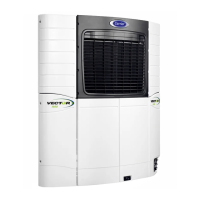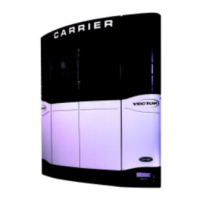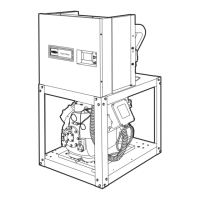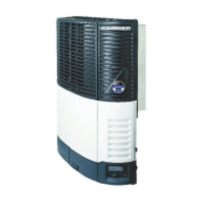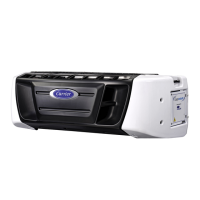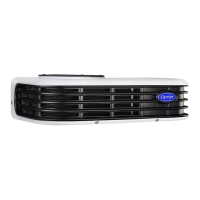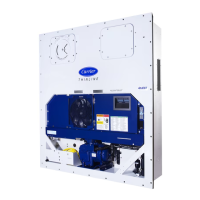9−13
62-11389
9.6 Microprocessor Diagnostics
The purpose of the following procedure is to provide a
logical and straightforward guide to be used when dia-
gnosing operational or other problems occurring with
the microprocessor. Often users and technicians have
mistakenly worked to correct a problem that has ended
up being normal operation. The microprocessor has
several different conditions contributing to operating pa-
rameters. These conditions are called out in the various
diagnostic charts to aid the technician in pinpointing the
problem, or in realizing that the unit is performing nor-
mally.
When using these trees, it is important to verify the re-
ported symptom or problem and then correctly identify
the appropriate tree for that particular condition. Using
the incorrect tree will lead to an incorrect diagnosis.
When using these diagnostic trees, it is very important
not to skip any steps. Follow the flow of the trees in the
order that they are laid out. These trees are formatted
into a logical diagnostic sequence. Skipping around the
trees will most likely lead to errors in diagnosis.
Throughout the trees, the steps will point the technician
to areas to look at or check for a problem. Most of the
steps will lead the technician to a circuit or other area of
the unit to check, test, and possibly repair other than the
microprocessor. Some steps will point to a possible
problem with the microprocessor. Whenever reaching
one of these steps, it is a very good practice to install the
new microprocessor, then verify unit operation PRIOR
TO writing hours, Trailer ID, Unit Serial Number, etc.,
into the new microprocessor. Once the technician is sat-
isfied that a new microprocessor is required, the hours,
trailer ID, unit serial number, customer configurations,
etc., should be entered. Should the problem remain
even with the new microprocessor in place, once all re-
pairs are made, the original microprocessor is to be rein-
stalled into the unit, to avoid unnecessary costs to the
customer or having the Warranty Request rejected if
there is no problem found with the returned micropro-
cessor.
All steps leading to replacement of the microprocessor
have a number associated with them. When filling out
the MPR tag that will be attached to the returned part,
write the step number on the upper half of the tag in the
Failure Description Field. Include the same information
in the Failure Description Field when entering the war-
ranty claim information on line. This will show which
diagnostic tree was used and the path that was followed
to determine the micro was at fault.
Refer to the following table to identify the correct tree to
use.
Table 9−2 Microprocessor Diagnostics
Condition
Description Diagnostic tree
1 Main Power switch On - Unit Does Not Operate Figure 9−5
2 Main Power switch On - Unit Operates But Not Properly Figure 9−6
3 Main Power switch Off - Unit Fails To Stop Figure 9−7
4 Unit Will Not Run In High Speed Figure 9−8
5 Unit Will Not Run In Low Speed Figure 9−9
6 DataLink Data Recorder Data Download Problems When Using
ReeferManager and a Download Cable. Data File Analysis Prob-
lems Using Reports
Figure 9−10
7 PC Card Problems Figure 9−11
8 Programming Problems With PC Cards Figure 9−12
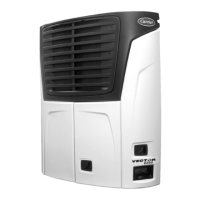
